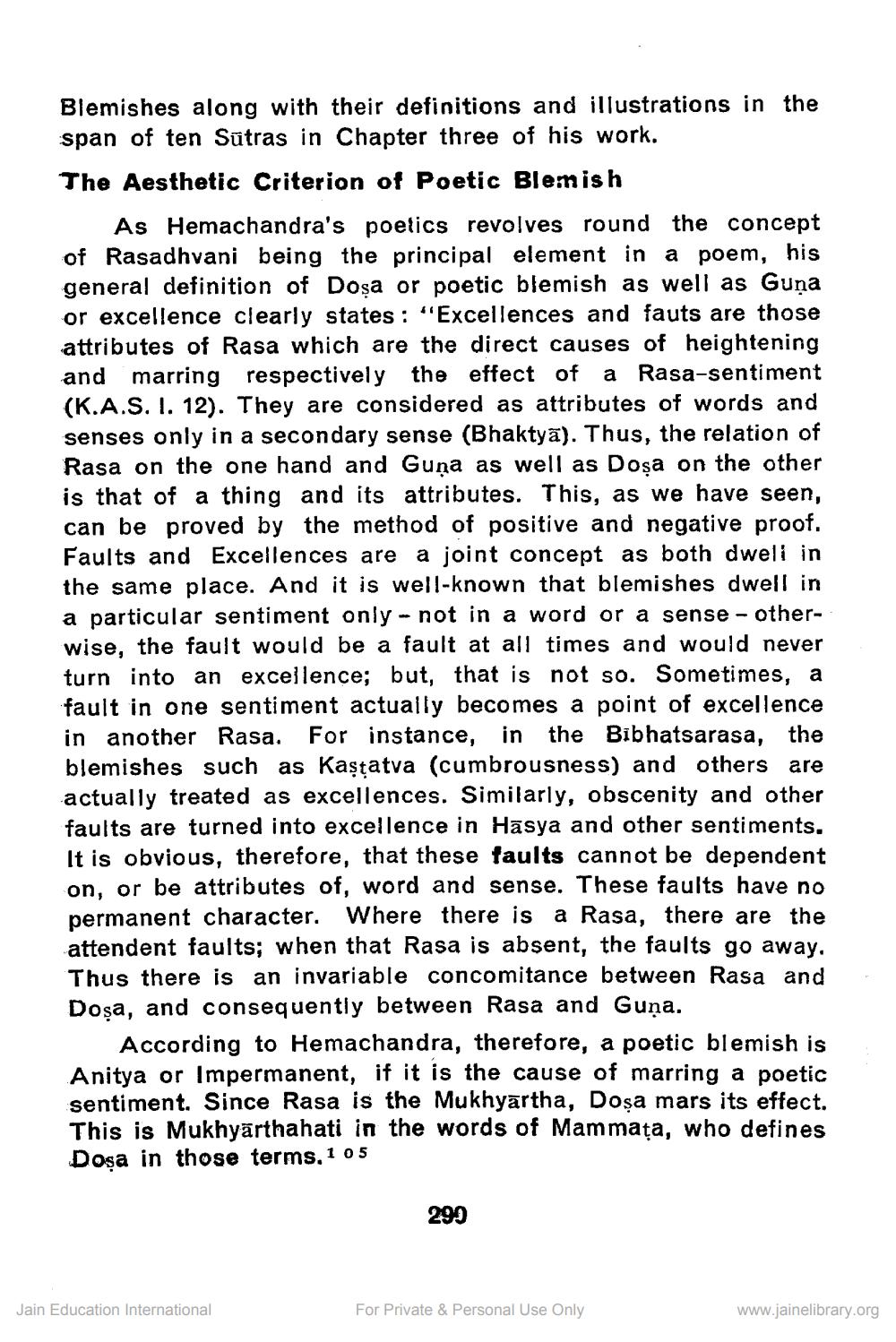________________
Blemishes along with their definitions and illustrations in the span of ten Sūtras in Chapter three of his work. The Aesthetic Criterion of Poetic Blemish
As Hemachandra's poetics revolves round the concept of Rasadhvani being the principal element in a poem, his general definition of Doşa or poetic blemish as well as Guņa or excellence clearly states : "Excellences and fauts are those attributes of Rasa which are the direct causes of heightening and marring respectively the effect of a Rasa-sentiment (K.A.S. 1. 12). They are considered as attributes of words and senses only in a secondary sense (Bhaktyā). Thus, the relation of Rasa on the one hand and Guna as well as Dosa on the other is that of a thing and its attributes. This, as we have seen, can be proved by the method of positive and negative proof. Faults and Excellences are a joint concept as both dweli in the same place. And it is well-known that blemishes dwell in a particular sentiment only - not in a word or a sense -otherwise, the fault would be a fault at all times and would never turn into an excellence; but, that is not so. Sometimes, a fault in one sentiment actually becomes a point of excellence in another Rasa. For instance, in the Bibhatsarasa, the blemishes such as Kaştatva (cumbrousness) and others are actually treated as excellences. Similarly, obscenity and other faults are turned into excellence in Hasya and other sentiments. It is obvious, therefore, that these faults cannot be dependent on, or be attributes of, word and sense. These faults have no permanent character. Where there is a Rasa, there are the
endent faults; when that Rasa is absent, the faults go away, Thus there is an invariable concomitance between Rasa and Doșa, and consequently between Rasa and Guņa.
According to Hemachandra, therefore, a poetic blemish is Anitya or Impermanent, if it is the cause of marring a poetic sentiment. Since Rasa is the Mukhyārtha, Doşa mars its effect. This is Mukhyārthahati in the words of Mammata, who defines Dosa in those terms, 1 0 5
299
Jain Education International
For Private & Personal Use Only
www.jainelibrary.org




